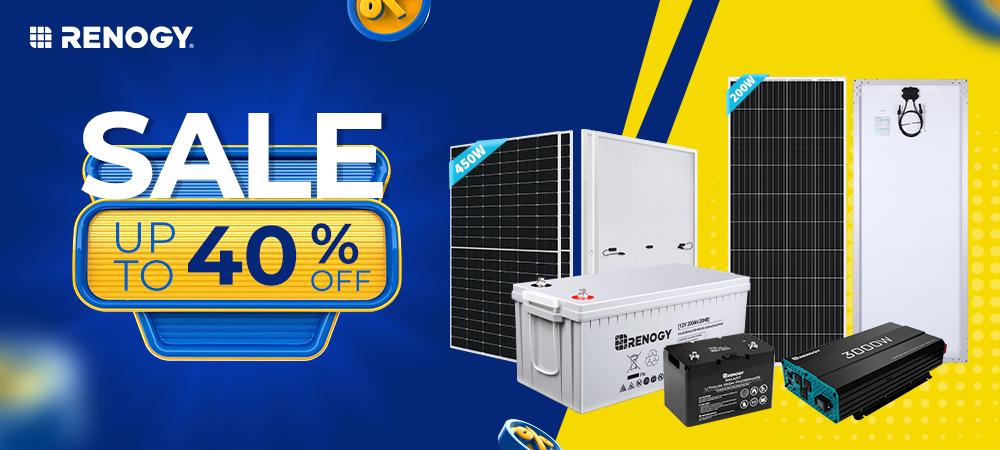Solar Battery Storage System Cost: Things You Need to Know
The cost of solar components is going down as more and more people invest in solar. Nowadays, a solar battery storage system costs significantly less than it used to a decade ago.
The only problem is not everyone is aware that using solar is now cheaper than using grid power.
Get the word out by sharing this article with your friends and family so they can learn about solar batteries and enjoy massive savings on their utility bills.
In this article, we discuss:
- What Is A Solar Battery and why are solar batteries important?
- Types Of Solar Batteries
- How Much Does A Solar Battery Cost?
- Factors Affecting Solar Battery Cost
- Do Solar Batteries Qualify for Solar Tax Credits?
- How Long Does It Take To Break Even On A Solar Battery?
- Will Solar Batteries Be More Affordable In The Future?
- What To Look For When Buying A Solar Battery?
- Are Solar Batteries Worth It?
- Find the best solar batteries from Renogy
Let’s begin.
What Is A Solar Battery and why are solar batteries important?
A solar battery is an energy storage device that stores the power produced by solar panels for later use. Solar batteries come in especially handy when your solar panels cannot generate power – as is the case, during the night or when it’s overcast.
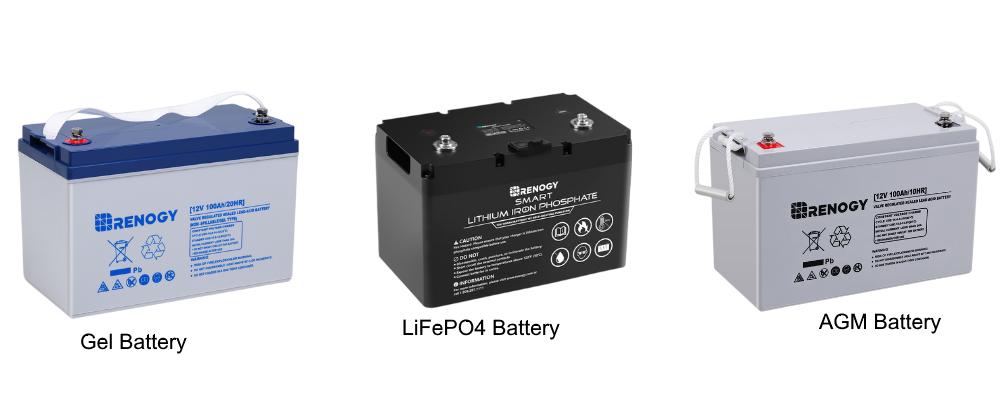
Think of solar batteries as an energy reservoir that is used when there's no more energy being generated. For example, if the solar panels are not working and the grid is down, you can use the energy stored in your solar battery bank to power your devices.
Most people who install solar batteries do so for four main reasons:
1.To have emergency backup power in case the grid goes down.
2.To prevent the excess energy generated by solar panels from going to waste due to a lack of energy storage or net metering.
3.To continue powering their devices even when their solar panels are not generating power and there’s no other power supply (off-grid living).
4.To reduce energy costs since solar is the cheapest source of energy. The cost per kWh of solar is more affordable than the cost per kWh of grid power.
Some homeowners prefer feeding their excess power back into the grid in return for benefits from the power utility (net metering). The benefit of net metering is that you avoid buying batteries and instead use the grid as your energy storage system. The drawbacks of net metering are:
●The power utility may not treat you fairly and choose to undervalue your contributions.
●If the grid goes down, you won’t have any backup power source.
As a result of these drawbacks, some homeowners find installing batteries more efficient than using the grid.
Types Of Solar Batteries
There are many types of solar batteries being used today. Some of the battery types are:
●Flooded Lead-Acid--FLA
●Gel Lead-Acid--GLA
●Absorbed Glass Mat (AGM)--ALA
●Lithium Iron Phosphate--LFP
●Lithium Nickel Cobalt Aluminium Oxide--NCA
●Lithium Nickel Manganese Cobalt Oxide--NMC
Among the various types of solar batteries, the most affordable yet shortest-lived batteries are Flooded Lead-Acid batteries. These batteries typically have a lifespan of 500 life cycles or 1-2 years.
Next in line, in terms of affordability and short lifespan are Gel and AGM batteries which are an improved version of flooded lead-acid batteries.
Lastly, the most expensive batteries and yet the longest lasting would be the Lithium-ion batteries which include LFP, NCA, and NMC batteries.

How Much Does A Solar Battery Cost?
Besides the type of material used to construct the battery, solar batteries can be divided into two based on their storage capacity.
● The first category features smaller solar batteries that individually have a battery capacity that’s insufficient for use in most homes. These batteries need to be linked together to form a bigger battery bank that can be used to power homes.
Using smaller batteries is often cheaper when building large-capacity battery banks. For example, building a 13 kWh battery bank using Renogy’s 12V 100Ah LFP batteries costs approximately $5,170. Accounting for the need for battery replacements, the total cost across 25 years is still less than $10,340.
● The second category has large single-unit solar batteries with capacities usually over 10 kWh of capacity. An example is the Tesla Powerwall that’s no longer being sold separately. For the most part, batteries in the second category are more expensive than their smaller counterparts. A Tesla Powerwall usually retails at $12,000. So if you have to replace this unit before the panels’ 25-year lifespan is over, it will cost you over $20,000.
At the end of the day, it's up to you to pick the battery sizes you prefer. Here at Renogy, we sell lightweight, reasonably-sized, and affordably priced Lithium batteries ranging from 0.6 kWh to over 4 kWh of energy storage.
We also have 100Ah and 200Ah 12V Gel and AGM Lead-Acid batteries that are even more affordable, with prices ranging from $200 to $450. *Note these prices may be subject to change.
Factors Affecting Solar Battery Cost
The cost of a solar battery storage system plus installation depends on several factors that determine whether the final system cost is going to be high or low.
Examples of the factors that influence the cost of solar batteries are:
● Size of the Battery’s Storage Capacity. Batteries with bigger storage capacities are more expensive.
● Type of the Battery. Different types of batteries are made with different materials and technologies. Depending on the type, the battery will vary in different ways. For example, lead-acid batteries with the shortest lifespan are often also the most affordable. In contrast, long-lasting lithium batteries cost the most. So the battery type affects the cost to a large extent.
● Battery’s Brand or Manufacturer: Different manufacturers produce batteries of different qualities, standards, and pricing. For example, our certified batteries will cost slightly more than poorly made batteries.
● Location: Most governments today have tax credits, subsidies, and policies to encourage the adoption of solar by businesses and homeowners. Depending on your location, and the incentives available to you, the cost of the same solar battery can vary greatly.
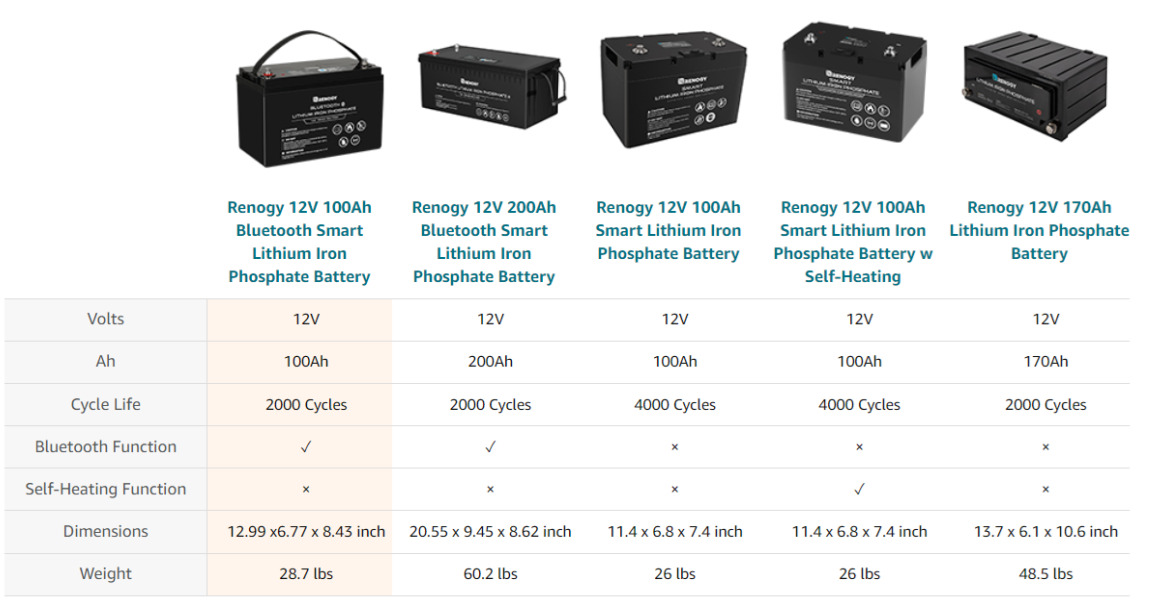
Do Solar Batteries Qualify for Solar Tax Credits?
While still on the subject of solar tax incentives offered by governments worldwide, the US government is currently offering a massive 30% dollar-for-dollar federal tax credit if you purchase and install a solar system before 2033. The rebate also applies to the expenses for solar batteries which are bought to complete your existing solar power system.
This means you get to enjoy a 30% discount on your solar purchases. How? You claim the 30% solar investment tax credit on your income tax. Doing so will drastically lower your upfront costs when buying and installing solar.
Your state will likely have other policies and measures to encourage investment in solar. As a result, the final cost of your system will likely be lower than 70% of the asking price.
To find out how to get the solar investment tax credit, click here.
How Long Does It Take To Break Even On A Solar Battery?
Here’s how to calculate how long it will take you to break even on a solar battery investment.

●Step 1: Calculate the total cost of purchasing and installing your proposed solar system. The total cost should include the cost of battery banks * 2, the cost of solar panels, cost of all the other components (inverter, charge controller, connectors, etc.). Our sample 5kW system cost a total of $30,000.
●Step 2: Subtract the 30% federal tax credit from your answer in step 1 to find the actual total cost of your solar system. Let’s suppose we got a 5 kW solar panel system with battery storage at a final cost of $21,000.
●Step 3: Calculate the amount of money your solar system saves each year by using solar instead of the grid. Suppose the cost per kWh of grid power is $ 0.175 (17.5 cents) and your 5 kW system generates 9,125 kWh annually. The annual savings are $ 0.175 x 9,125 kWh, which gives $1,596.88.
(To find annual power generated, multiply your panel system size by local peak sun hours and 365 days. E.g., 5 kW * 5 hrs * 365 days = 9,125 kWh.)
●Step 4: To find out how long it takes to break even on your solar batteries, AKA the period to recover the investment, also called the payback period, we divide the system’s actual cost in step 2 by the amount of money saved each year in step 3. The result of $21,000 / $1,596.88 is 13.15 years.
Therefore, our sample system takes 13.15 years for our sample solar batteries to break even and start being profitable.
If you want to determine how long it will take you to break even on your solar batteries, follow the simple 5-step process above, substituting your figures where appropriate.
In summary, all we are trying to achieve in the above calculation is to find out how many years it takes to save the same amount of money as you spent on the solar system in the beginning.
Will Solar Batteries Be More Affordable In The Future?
It’s no secret solar products have consistently gotten cheaper over the last few decades. Just in the last decade alone, the cost of solar power has dropped by over 80%. And this trend is likely to continue for the foreseeable future.
That being said, the cost of lithium-ion batteries has stagnated recently and may continue to stay constant. In fact, the cost of lithium batteries may increase soon.
Why is this happening?
The world is experiencing a rise in the price of the mineral Lithium due to supply-demand discrepancies. As a result, the increased demand for lithium by manufacturers is causing lithium to reach record prices of $78,000 a tonne.
After this period of uncertainty passes, the price of lithium batteries is expected to resume its downward trend. Failing that, manufacturers will likely introduce less-expensive Sodium batteries to replace Lithium batteries.
What To Look For When Buying A Solar Battery?
The best solar battery has the following characteristics:
1.It has a lifespan of over 10 years.
2.It has a depth of discharge as close to 100% as possible.
3.It offers the most value for your money throughout a solar system's lifespan.
4.It should not pose a significant risk to your safety and your property.
5.It requires a negligible amount of care and maintenance.
6.It has a smart self-management system and protections that prevent accidents and abuse.
7.It's built with high-quality materials that are non-flammable and not prone to explosions.
If the battery you purchase doesn’t have these characteristics, it’s not the best battery you could buy.
That being said, a battery with the above features won’t be easily affordable and will cost quite a bit. If that’s the case, here are five things you need to watch for:
1. Battery Type: Each battery type has its share of advantages and disadvantages. As a result, before buying a battery, make sure you understand its pros and cons to avoid surprises in the future. For example, a flooded lead-acid battery is very cheap but it only lasts for a short time. Another example is a lithium battery seems expensive, but it's actually cheaper in the long run due to its long lifespan.
2. Battery Capacity or Size: The bigger the battery capacity, the more energy it can store. Buy the battery size that gives the right blend of cost and space utilization.
3. Cost Savings: A bigger battery isn’t always better when it comes to getting the bang for your buck. It’s often the case that standard, smaller batteries are more affordable than the big batteries with the highest specifications.
4. Life Cycles: A life cycle describes a round of discharging and recharging your batteries. The more life cycles your battery has, the longer it lasts. Look for a battery that has more life cycles than the average battery of the same type.
5 .Depth of Discharge (DOD): The depth of discharge refers to how much of the energy stored in a battery you can access. A battery that can be discharged completely without harming the battery's lifespan, is described as having a 100% DOD. Choose batteries that have at least an 80% depth of discharge.
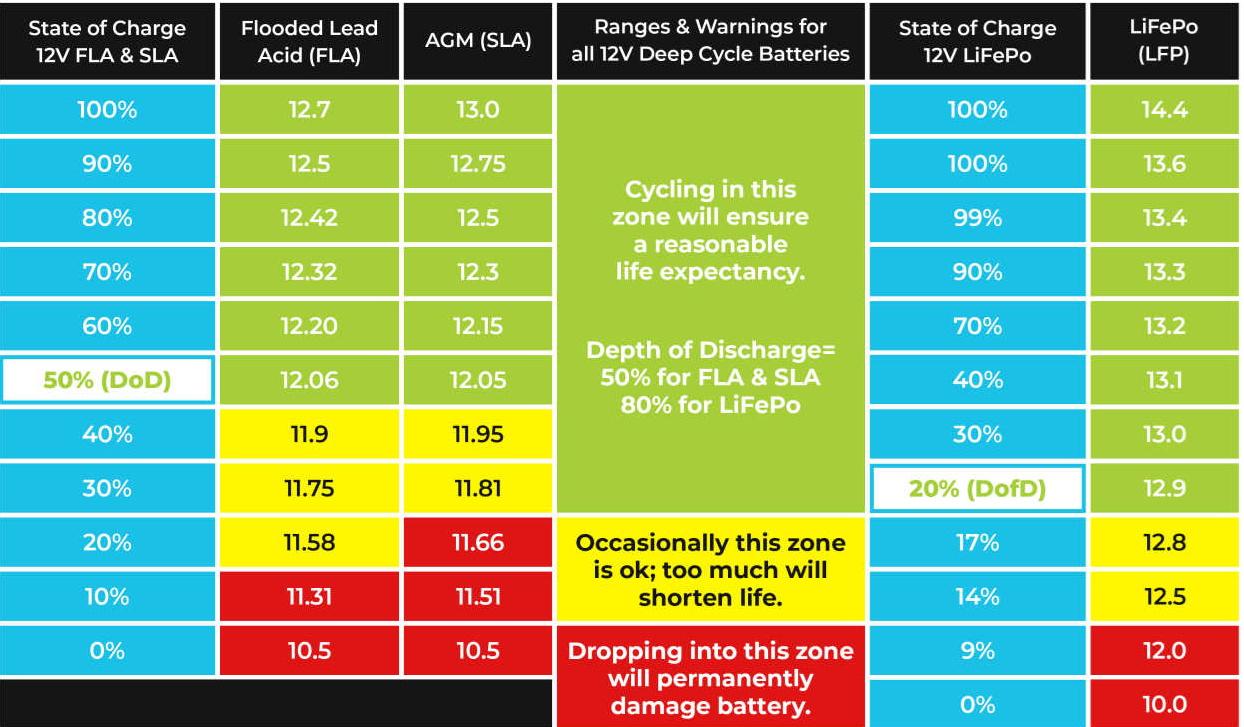
If you follow the information in this section, you will find that picking the perfect battery for your budget and system has never been easier.
Are Solar Batteries Worth It?
Solar batteries are still worth it in 2023 and beyond. Why?
Firstly, the potential cost-savings of a solar panel plus battery storage system are huge. As a result, they more than justify the investment as they are cheaper than the alternative – grid power.
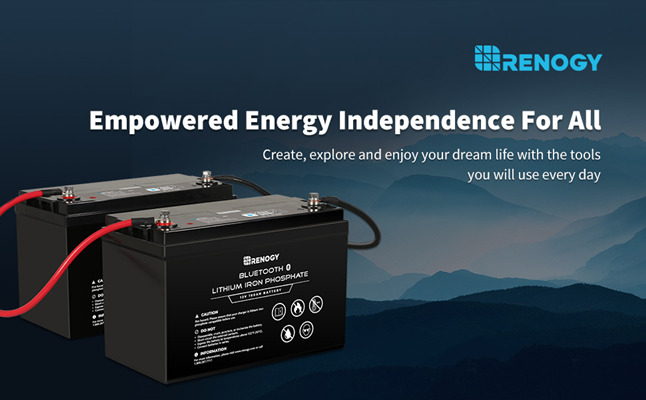
Secondly, some people decide to forgo buying a battery because they have full retail net metering. If you are unfamiliar with net metering, it's a practice where you feed your excess solar energy into the grid. And receive back the same amount of energy when your solar panels aren’t working.
This seems like a great idea at first, but it has plenty of drawbacks. Here are the drawbacks of choosing net metering over a battery bank:
●You leave yourself vulnerable to the utility’s rate changes.
●More and more utility companies are pushing back against net metering, and laws like the NEM 3.0 are being passed to reduce the benefits you get from the utility.
●You have no control over the grid, which is highly vulnerable to changing weather conditions and nature.
●You have no emergency backup power supply when the grid is down and solar panels aren’t working.
After considering the drawbacks of net metering, most will realize a solar battery is still the better option.
To learn more solar battery systems, check out this article: How Does A Solar Battery Bank Work?
Find the best solar batteries from Renogy
Since 2010, Renogy has upheld the mission not only to empower more individuals energy independence with clean solar energy but also to make the best value for all customers’ hard-earned money with high-quality and affordable products.
Renogy now has a full range of solar components for off-grid scenarios, including
* Rigid, flexible, and portable solar panels;
* PWM and MPPT charge controllers (more variables are available);
* Inverters (DC to AC inverters and inverter chargers);
* Solar batteries for sale (AGM, Gel, and lithium ion phosphate batteries);
* Wiring and racking accessories.
Are Renogy’s batteries reliable? Check out the video below, so you can make your own judgement:
Related articles:
How To Charge A Lithium Battery?
Should I Disconnect My RV Battery When Plugged In?
Things About RV House Battery Replacement


